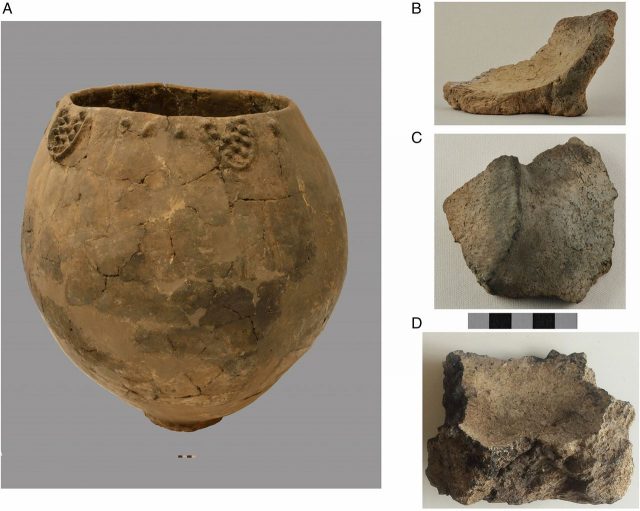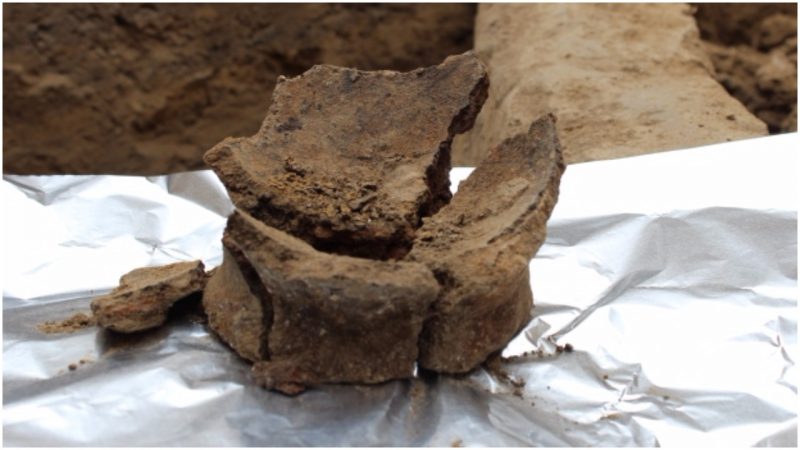In Georgia there is a proverb, “Every guest is a gift from God,” and this perhaps sums up the reputation of the residents of this country as gregarious and generous hosts. It is considered the height of politeness to welcome visitors with a glass–or two–of homemade wine.
Nestled in the Caucasus mountains in the area known as the fertile crescent, one of earliest regions in which our ancestors began to adopt an agricultural way of life, Georgia has a long and proud history of wine-making. The traditional methods, almost lost during the Soviet occupation from 1921 to 1991, have been undergoing a revival in recent years.
Georgians have long claimed that their wine-making history began far back in prehistory, and it seems that they were right all along. Research published in early November 2017 in the journal Proceedings of the National Academy of Sciences reveals that the roots of Georgian wine production go as far back as 6000 B.C.
A quest to trace the roots of wine culture has taken Patrick McGovern, an anthropologist from the University of Pennsylvania, to various locations around the world. He decided to explore ancient sites in Georgia because of archaeological and written evidence suggesting that wine was an established part of different cultures in the region several thousand years ago.
Some the oldest evidence of ancient vinters discovered previously includes a wine press and jars used for fermentation from around 4100 B.C. found in Armenia, and vessels found in the Zagros Mountains of Iran, which contained traces of wine dated from between 5400 B.C. to 5000 B.C.

Photographs by Mindia Jalabadze and courtesy of the National Museum of Georgia.
But the latest finds have pushed the beginnings of wine-making back even farther. Researchers and archaeologists have been excavating the site of a Stone Age settlement called Gadachrilli Gora, roughly 20 miles away from the Georgian capital city of Tbilisi. They have unearthed pottery, some of which is adorned with grapevines, but the really exciting discoveries have been made through chemical analysis of the potsherds, which reveals traces of four organic compounds, “ancient leftovers” of 8,000-year-old wine. These results, indicating that the contents of at least one of the jars date from around 5980 B.C., are significant as it pushes the evidence to at least 600 years earlier than previously discovered. According to McGovern, pushing the estimates for the earliest traces of wine-making back by as much as a thousand years “is a big time jump.”
After careful cleaning of the pottery shards, avoiding common cleansing techniques that would have removed any chemical residues, the team found high concentrations of tartaric acid and other compounds, which are compelling evidence that the pottery was used to hold wine made from grapes. The researchers have identified grapes as the single fruit across the mountains in Georgia that would leave traces of tartaric acid. The overall chemical profile leaves no doubt that fermentation of grapes was deliberately instigated in these pots.
Pollen analysis of soil samples taken from the surrounding hillsides as well as radiocarbon dating methods of the pottery have helped to confirm the age of the wine remnants. As it turns out, the nearby hills were once covered with grapevines, cultivated and harvested by the ancient people of Georgia. More pottery bearing evidence of eight-millennia-old wine has been found in one more Neolithic settlement, called Shulaveris Gora, also not that far from Tbilisi. The grapes used by these ancients are a variety of the common grape, Vitis vinifera, which today is grown from Southwest Asia in the east to Portugal and Morocco in the west. The study’s co-author, Stephen Batiuk, from the University of Toronto, stated: “We believe this is the oldest example of the domestication of a wild-growing Eurasian grapevine solely for the production of wine.”
In the traditional Georgian method, the fruit is fermented and aged in earthenware jugs called qvevri, which are buried in the ground up to the neck. The same jar may be used by generations of a family. Batiuk explains the qvevri process as “where the grapes are crushed and the fruit, stems and seeds are all fermented together.” The huge ancient vessels, which may have held up to 80 gallons of liquor, are similar to those used today, and it is thought that the process was less refined, but still very similar.
Conditions in this corner of the planet would have been perfect for winemaking following the end of the last Ice Age, with the Caucasus climate being predominantly warm and moderate. In such conditions, freshly made grape juice could start undergoing the fermentation process in a little over a day.
“The discovery of early sixth millennium B.C. grape wine in this region is crucial to the later history of wine in Europe and the rest of the world,” reads part of the study’s abstract. More than that, the study adds a significant piece of knowledge about humans of that era, precisely the times when they started settling down in communities and when they began planting and domesticating crops. It is a genuine glance back to what is known as the Neolithic Revolution, a period in which many cultures made the transition from a hunter-gather lifestyle to settling as farmers, which commenced in around 10,000 B.C.
McGovern affirms that the people who lived here not only knew how to effectively ferment the grapes but also had knowledge of horticultural methods, including how to transplant and cultivate grapevines. The researchers conclude that these people clearly attempted to improve their wine-making methods.
Related story from us: Carménère, a wine believed extinct for 150 years, rose from the dead in Chile
The research in Georgia is still ongoing, and more layers are yet to be explored in the Neolithic settlements, which means that the possibility of coming across even earlier traces of enologyy is not excluded.
